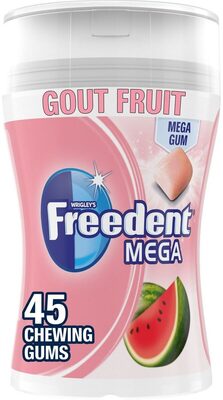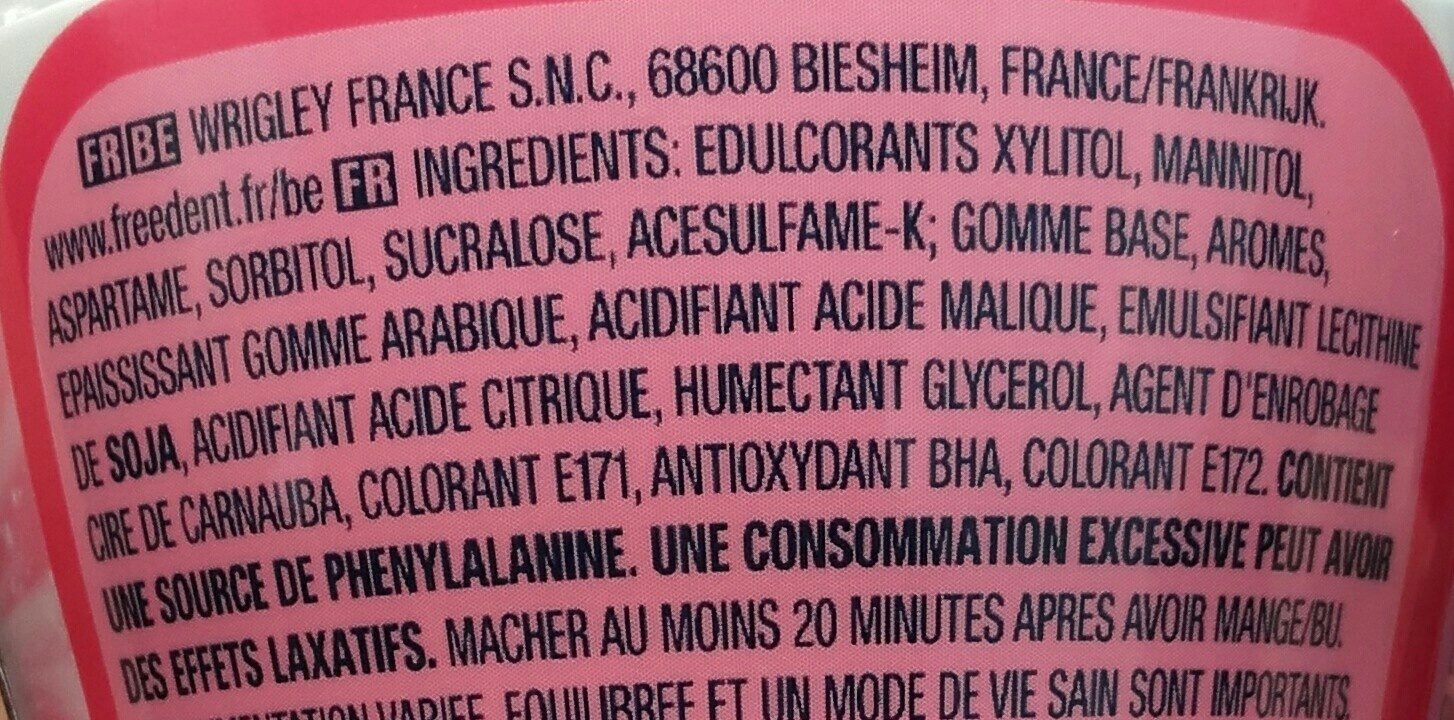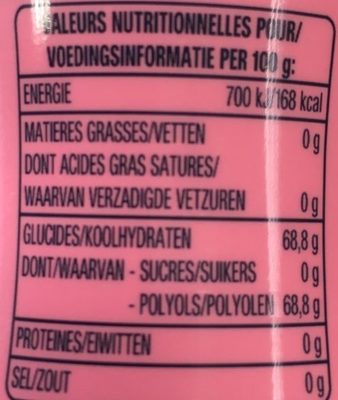Freedent Mega - Wrigley's - 103 g e (45 dragées)
This product page is not complete. You can help to complete it by editing it and adding more data from the photos we have, or by taking more photos using the app for Android or iPhone/iPad. Thank you!
×
Barcode: 4009900517843 (EAN / EAN-13)
Common name: Chewing-gum sans sucres avec édulcorants au goût pastèque.
Quantity: 103 g e (45 dragées)
Categories: Snacks, Sweet snacks, Confectioneries, Chewing gum, Sugar-free chewing gum
Labels, certifications, awards:
Low or no sugar, Not advised for specific people, Contains a source of phenylalanine, Green Dot, No sugar, Not recommended for children under 3 years, Tooth-health related labels, With sweeteners, fr:Union française pour la santé bucco-dentaire
Stores: Leclerc, Magasins U
Countries where sold: France
Matching with your preferences
Environment
Packaging
Transportation
Report a problem
Data sources
Product added on by openfoodfacts-contributors
Last edit of product page on by charlesnepote.
Product page also edited by beniben, kiliweb, magasins-u, mrhalal, packbot, sebleouf, thaialagata, yuka.Ry9vOERvWWJyTjRrdWNNMDRrUCswY0pPbjhDSGZXbVhFUFVVSWc9PQ, yuka.U0prYks1bGVxYWNubjhNWSt3R09wL3RQbUxTc1lXMlhKT0VTSVE9PQ, yuka.UmEwR05KNHV0K01MdU1JUjJrblF4NGtxNjQzNFp6dTFGdUFNSVE9PQ, yuka.VFo0UU82NGlpY2NWaXN3UnBoN3M5ZjlwK3JtdWNWMnBPOUUrSVE9PQ, yuka.VlB0YVB2UW5wZnRXdHNNUDVqL1UydlJxMzhTSFozdWNKZVZMSVE9PQ, yuka.YWExYkRyd3VuYU1Pc01BbjR3SHMyLzhsblorRGMzdXRkZnROSUE9PQ, yuka.ZElwWUZhZyt0S00xbGZZQ3pDai8zTlI0bHFLRlVrR2NEZGNYSVE9PQ.









